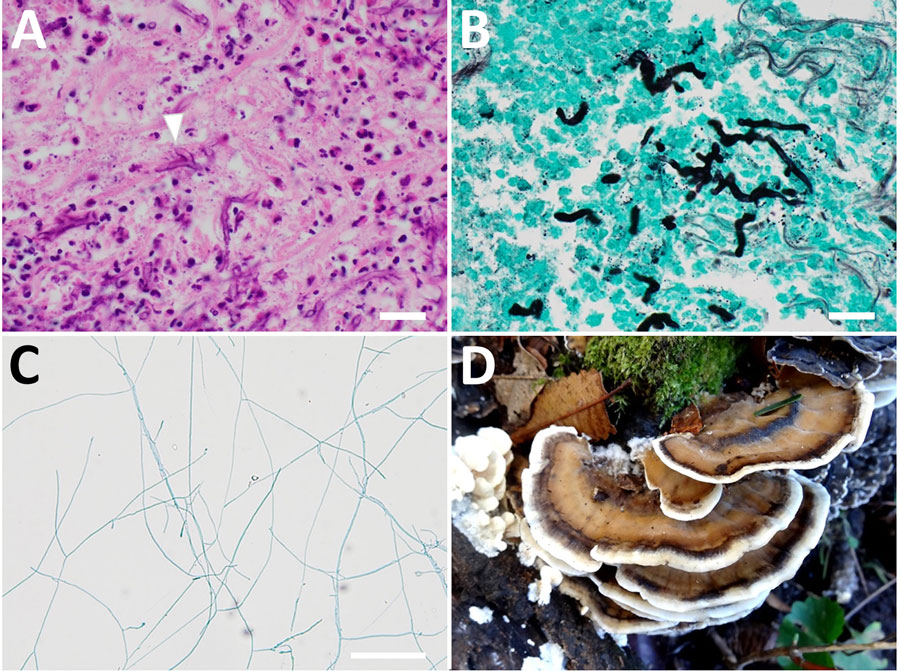Volume 31, Number 2—February 2025
Dispatch
Bjerkandera adusta Fungi as Causative Agent of Invasive Chronic Rhinosinusitis
Figure 2

Figure 2. Imaging from a biopsy specimen from a sinus lesion in a patient in Japan with invasive chronic rhinosinusitis caused by Bjerkandera adusta fungi and a Bjerkandera spp. mushroom found in nature. A) Mycelium of filamentous fungi (arrowhead) shown by hematoxylin-eosin staining. Scale bar indicates 20 μm. B) Filamentus fungi shown by Grocott staining. Scale bar indicates 20 μm. C) Mycelium of fungi grown on potato dextrose agar. Scale bar indicates 100 μm. D) Bjerkandera spp., a burnt-looking stemless mushroom that grows in forests. Photograph courtesy of the Tokyo Mushroom Club.
Page created: December 31, 2024
Page updated: January 31, 2025
Page reviewed: January 31, 2025
The conclusions, findings, and opinions expressed by authors contributing to this journal do not necessarily reflect the official position of the U.S. Department of Health and Human Services, the Public Health Service, the Centers for Disease Control and Prevention, or the authors' affiliated institutions. Use of trade names is for identification only and does not imply endorsement by any of the groups named above.